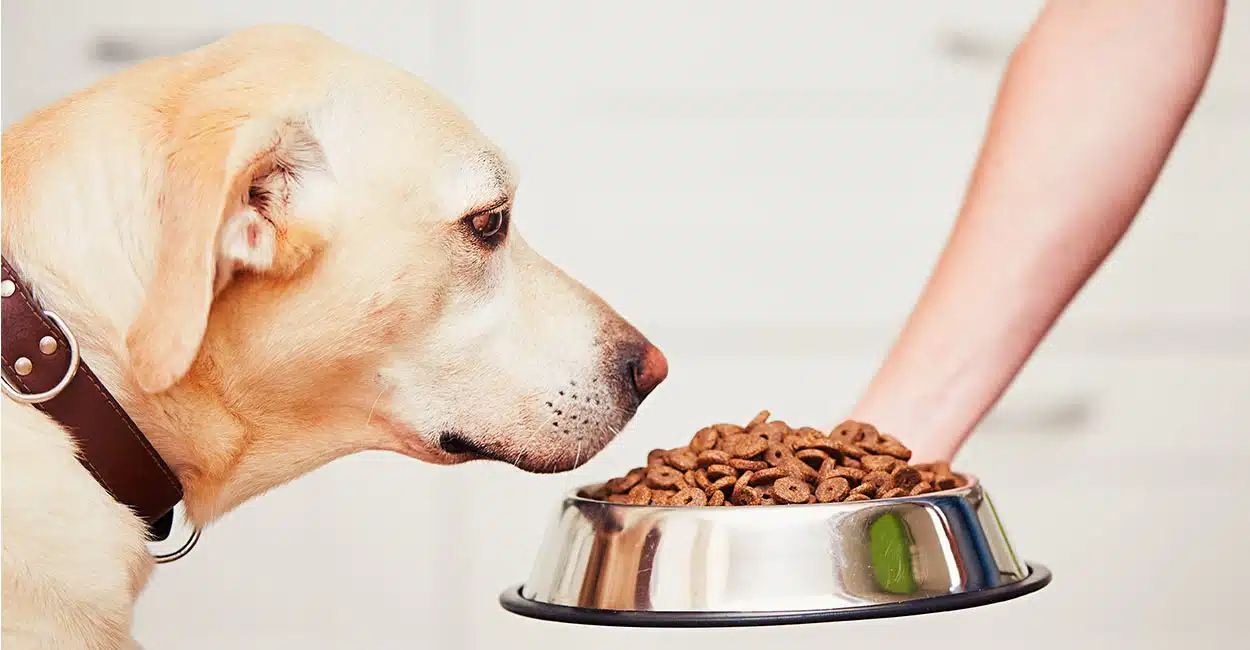Fuji seemed her usual fun-loving doggy self the day Lloyd Taplin took the Labrador retriever outside their range in Ohio for a game of fetch. But very quickly, Taplin realized something wasn’t right.
“I threw the ball once, she brought it back and just melted during a puddle at my feet,” Taplin recounted.
Up thereto point, Fuji had been active and healthy, aside from having skin allergies. After collapsing within the driveway, Fuji, then age 9, was ready to rise up woozily. Taplin rushed the dog to an emergency veterinary hospital, where she was diagnosed with a significant heart disease called dilated cardiomyopathy, or DCM.
DCM isn’t rare in dogs but typically, it’s seen especially breeds, usually large ones. Doberman pinschers. Great Danes. Newfoundlands. Boxers. Irish wolfhounds. Cocker spaniels (an exception to the dimensions rule-of-thumb). Labrador retrievers aren’t on the usual-suspect list.
It seems that Fuji’s case is among a recent spate of canine DCM diagnoses not explained by heritage. Instead, the common thread is diet: Affected dogs are on narrow diets of economic dry foods that are grain-free and/or contain exotic meat proteins and/or a limited mixture of ingredients, particularly potatoes, or legumes like lentils or peas.
Fuji ate a kibble consisting primarily of kangaroo and lentils. A second Lab within the same household, 4-year-old Pippin, also had allergies and ate an equivalent food. In July 2017, seven months after Fuji’s diagnosis, Pippin started coughing. Her veterinarian detected a cardiac murmur and recommended she see a cardiologist.
Taplin scheduled Pippin at an equivalent time that Fuji was due for a follow-up visit, two months later. on reflection , Taplin said, “We were really stupid.” While Pippin seemed OK in July, still ready to run, by August, she was coughing badly. Taplin and her husband took the dog to the cardiologist then, but it had been too late. Pippin died in September.
Hundreds of reports
As of Aug. 24, the U.S. Food and Drug Administration had received reports of about 200 cases of dogs with heart condition potentially associated with diet. Of those, 140 have diagnoses of DCM, consistent with Dr. Martine Hartogensis, deputy director of the FDA Center for medicine Office of Surveillance and Compliance.
The FDA posted an alert about the suspected association between food and therefore the heart disease on July 12, after being notified by veterinary cardiologists that something was amiss.
The agency checked its log of pet food complaints. “Sure enough, we had about 25 to 30 cases in our database,” Hartogensis said during a interview .
In its public notification, the agency elaborated: “Diet in cases reported to the FDA frequently list potatoes or multiple legumes like peas, lentils, other ‘pulses’ (seeds of legumes), and their protein, starch and fiber derivatives early in their ingredient list, indicating that they’re the most ingredients. Early reports from the veterinary cardiology community indicate that the dogs consistently ate these foods as their primary source of nutrition for time periods starting from months to years. High levels of legumes or potatoes appear to be more common in diets labeled as ‘grain-free,’ but it’s not yet known how these ingredients are linked to cases of DCM.”
DCM may be a disease leading to an enlarged, weakened heart that’s unable to pump blood efficiently. Often progressing over time, the condition can cause fluid buildup or overtime . Dogs with DCM may tire quickly, cough, and have a labored and increased rate of breathing. More dramatic clinical signs are episodes of sudden weakness, fainting or collapse.
Although the link between DCM and diet was — and continues to be — undefined, Hartogensis said it had been compelling enough that the FDA believed alerting the veterinary community at large and therefore the general public was warranted.
“Veterinary cardiologists were very concerned,” she said. “They said, ‘Please do something. we have seen enough of those cases that we expect something goes on, and that we want people to remember of it.’ ” She added, “Lentils, potatoes, these sorts of ingredients have exploded within the market.”
Grain-free is all the craze
Grain-free and “limited ingredient” pet foods are so popular that in stores like Petco, one among the most important pet retailers within the country, such formulations dominate the central aisles. Traditional recipes containing grains like corn and wheat are relegated to the outer realm.
“A good portion of consumer demand is for grain-free, and that is reflected in both our online and in-store assortments,” Dr. Whitney Miller, Petco’s director of medicine , said by email.
According to a petfoodindustry.com blog post, “Pet food ingredients: What’s hot and getting hotter?” grain-free pet foods claimed 43 percent of the pet specialty market in 2017, with $3.4 billion in sales. (The pet specialty channel comprises mainly pet stores. It doesn’t include mass-market, online or grocery channels.)
Pet-food makers say the increase of grain-free varieties during the past 10 years is fueled by pet owners’ desire to style their pets’ eating habits after their own. “Many people today became increasingly curious about their own diet, following trends like lower-carb diets, and their food and nutrition philosophies carry over when selecting food for his or her four-legged relations ,” Dana Brooks, president and CEO of the trade group Pet Food Institute, said by email.
Asked whether any pet food makers who invest heavily in grain-free formulations are considering shifting to more conventional blends, in light of the health concerns, Brooks replied: “It is vital to notice that the FDA has not recommended any recalls or advised any dietary change for healthy pets — their investigation is in its early stages …. PFI members are also investigating any possible links [between diet and DCM in dogs not predisposed to the condition] and are carefully reviewing their formulations to assess and ensure nutritional adequacy.”
To date, news about the potential problem with grain-free diets hasn’t altered consumer buying patterns, consistent with Miller at Petco. “We’ve seen no measurable change in demand since the FDA alert in July,” she said.
Confounding factors
Because multiple brands are involved in suspect cases, researchers and therefore the FDA are reluctant to publicly name names. Furthermore, evidence does not imply that any particular ingredient must be completely avoided. the difficulty is proportion, not presence. “Those ingredients [such as potatoes and peas] are in pet foods for years, 30, 40 years,” Hartogensis said. “It’s the quantity that has changed.”
At first, the culprit generally seemed to be grain-free formulations, but understanding of the matter is evolving rapidly. Researchers say now that identifying the matter as grain-free diets is directly too narrow and too broad.
Trying to more accurately characterize the difficulty , Dr. Lisa Freeman, a veterinary nutritionist at Tufts University, coined the term “BEG” diet, for boutique, exotic and/or grain-free. “I think all of these are suspect at now ,” Freeman said.
Exotic diets have unusual meats like kangaroo, alligator, bison, venison and therefore the like.
“We do not know much about the nutritional value of these protein sources like we do chicken and beef,” observed Dr. Darcy Adin, a veterinary cardiologist who is a component of a team at North Carolina State University performing on the puzzle. “So that’s one potential cause.”
At an equivalent time, grain-free formulations aren’t all implicated. “It doesn’t seem to be that each one grain-free diets are represented in these [affected] dogs,” Adin said. Another confounding factor, she said, is that the incontrovertible fact that “the majority of foods on the shelves are grain-free.”
It might be , Adin said, that affected dogs have a predisposition to developing heart condition on particular diets.
A further possibility is that a high content of legumes like lentils and peas somehow reduces bioavailability of other nutrients, or causes an interaction among nutrients that results in disease, she said.
The complicated role of taurine
One nutrient deficiency most related to DCM is that of taurine, a sulfur-containing aminoalkanoic acid found abundantly in meat. Veterinarians discovered 30 years ago that the bulk of cats with DCM were taurine-deficient as a results of eating any of several brands and formulations of economic cat foods. Giving the cats taurine supplements cured the disease. Changing the formulation of cat foods to incorporate more taurine largely eliminated the disease. Today, DCM in domestic cats is rare.
(Among reports the FDA has received of probably diet-related DCM in pets are three reports involving seven cats. The agency said the causes in those cases, logged in 2015 and 2016, were undetermined.)
In dogs, the role of taurine in DCM is unclear. Unlike cats, dogs can synthesize taurine from methionine and cysteine, common sulfur-containing amino acids found in many foods. Consequently, no industry standards exist for taurine supplementation in dog foods.
Researchers attempting to discern the role of taurine within the development of typical cases of DCM found that “the overwhelming majority of dogs with DCM had normal taurine levels,” consistent with a Morris Animal Foundation article.
However, a couple of breeds are found to be vulnerable to developing DCM associated with taurine deficiency: cocker spaniels, Newfoundlands and golden retrievers.
Among recent cases of DCM in atypical breeds, changing the diet and adding taurine has improved or reversed the guts disease in many instances. That’s true even for dogs who didn’t present with low taurine levels, said Adin, who offered an example of seven patients she and her colleagues followed. After the dogs were changed to a grain-based diet and given taurine supplements, they showed significant improvement in three to nine months, she reported. (Whether the development happened due to the added taurine, the various diet, or both is an open question.)
While taurine could be an element in some cases of DCM, Freeman cautioned against assuming it’s true of all cases. “There are dogs with taurine deficiency, both typical and atypical breeds, but there also are dogs, both typical and atypical breeds, that don’t have taurine deficiency,” she said.
“Then, there are the standard breeds of dogs with DCM that has nothing to try to to with diet but is that the results of their genetic predisposition,” she said.
At an equivalent time, DCM in individual members of these typical breeds could, in fact, be diet-related. “We saw a doberman [a typical breed] last week that had taurine deficiency,” Freeman said. “His condition is improving with diet change and taurine supplementation.”
Which food to give?
Tracy McGlinchey, a pet owner in Connecticut, has been reading abreast of dietary factors in DCM since her 3-year-old Boston bull , Millie, was diagnosed in July. the primary sign that something wasn’t right surfaced the weekend after the Independence Day holiday, when Millie developed a random dry cough. “Think: cat with furball,” McGlinchey said. “Nothing terrible. You half ignore it.”
On Monday, McGlinchey’s 16-year-old daughter noticed Millie breathing fast and shallow. They took the dog to the veterinarian. An X-ray revealed an cardiomegaly . an instantaneous trip to the emergency hospital for an echocardiogram showed DCM.
Millie is susceptible to allergies, and McGlinchey believes potatoes are the cause, so she’s always steered beyond foods containing potato. Millie appeared to had best on a kibble composed of venison, lentils, peas and chickpeas. When the brand was discontinued, McGlinchey switched Millie to a boutique blend the primary four ingredients of which are anchovy meal, peas, fava beans and sunflower-seed oil .
Now that Millie has heart condition , McGlinchey is diving deep into ingredient labels, and trying one diet after another. Millie likes all of them , but McGlinchey hasn’t found one that she loves.
“Finding grained foods is challenging,” she said. “Everything is grain-free. And if it doesn’t have grains, then there is a lot of potatoes. and therefore the peas. It’s crazy.”
She’s been searching in pet stores instead of grocery stores, which are more likely to stock traditional brands, because buying pet food at the supermarket is “almost embarrassing,” McGlinchey said, half laughing at herself. “Like buying your kids a soda.”
She understands that the grain-free movement is fed by marketing. She said, “Who says dogs shouldn’t have grains?”
Freeman, the Tufts University veterinary nutritionist, said grains are perfectly fine ingredients. “Grains don’t contribute to any health problems, and are utilized in pet food as a nutritious source of protein, vitamins and minerals,” she said.
While many pet owners may feed grain-free and/or limited-ingredient formulations in an effort to regulate allergies, the pet won’t actually be allergic to a food or foods, consistent with Freeman. it’d be allergic to pollen, molds and/or dust mites instead, she said.
Even if a dog with skin or gastrointestinal problems gets better on a special diet, that does not mean that the development is due to a change in ingredients. Changing the diet brings changes in fat level, fiber level, fiber type and digestibility, too, Freeman noted. “While owners commonly think it is the ingredients that helped, many other factors also changed that are more likely to possess caused the development ,” she said.
Millie’s case has caused her veterinarian, Dr. Neil Marrinan, to vary his ways when it involves talking about diet with dog owners. Earlier in his career, he would advise them to feed a spread of foods, regularly changing brands and ingredients. After awhile, although his opinion remained firm, he stopped offering it. “People [have] … a preconception of what they need to feed their dog, and [they] come to the doctor for validation,” he said. “Unless I heard something that seemed out of the standard , i might avoid commentary.”
No more. “It got out of hand, these narrow-cast diets,” Marrinan said. “It’s cause for us to mention , ‘This isn’t good.’ “
He’s back to speaking up now. His advice: “I recommend varying the diet to incorporate grains, with meat because the first ingredient.”






